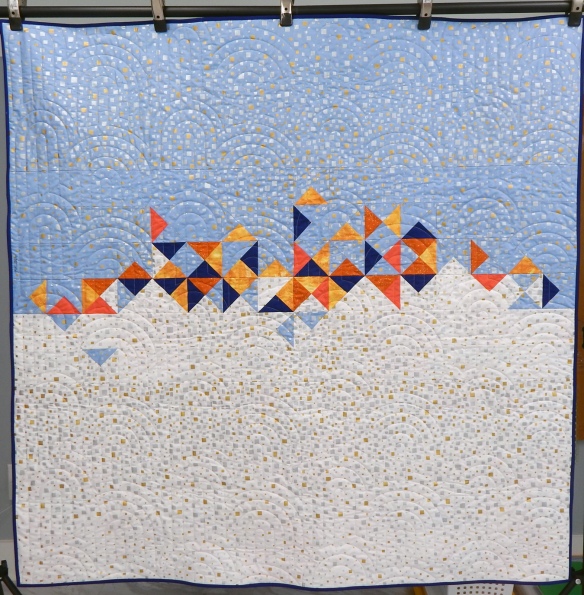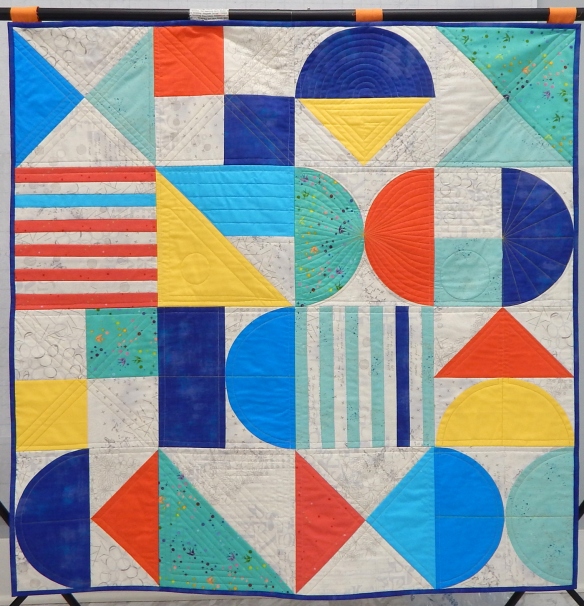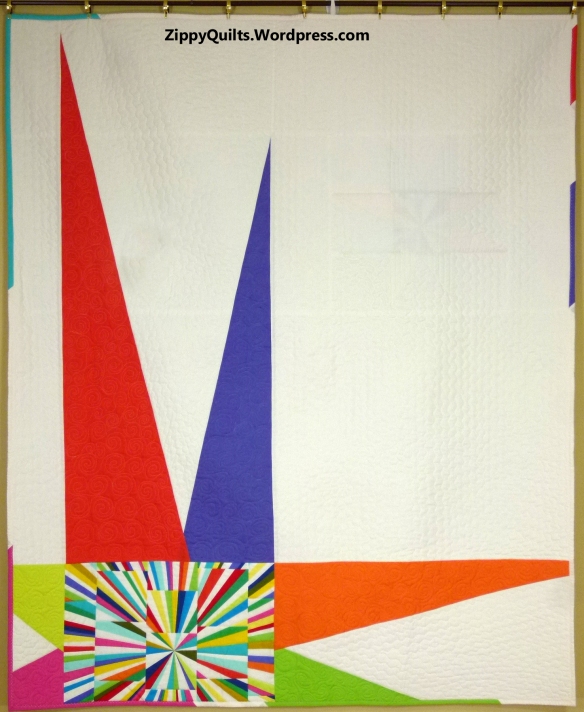I recently decided to make the Postcard from Sweden quilt, which I’ve admired for some time.
The photo above is from the front of the pattern.
I had to search for the pattern, which has always been free courtesy of the designer, Kelly Liddle. I’d like to link you to her, but I can’t find her except on Instagram (@jeliquilts). Anyway, the pattern is now available free for download from Stash Fabrics, here.
I have an extensive stash because, until recently, we lived in a rural area where the nearest “local” quilt shop was at least 45 minutes away. I gathered all 36 colors required for the top from stash!
This picture shows the first 15, so there was quite a stack by the time I had all 36 on the table! This is a 25 year quilt because that’s the period of time over which I’ve collected this stash.

For a few fabrics I had to substitute other choices that were not quite solid.

And even then it sometimes took more than one fabric to get all I needed of an unusual color.
And several of the fabrics had been cut long ago for unremembered projects!
But eventually, the huge stack of fabrics was reduced to a small stack of 6″ strips and the remaining fabrics were put back where they belong.
That was a full day of pressing, cutting, and folding.
I made a few fun discoveries along the way.
First, a couple of the fabrics seem to be poly-cotton blends. They are from before “modern” quilting came along, meaning that only the Amish and Gwen Marston were using a lot of solids, so I had trouble finding solids in the stores. Much of what I did find in fabric shops (which at the time had a lot of clothing fabric) was poly-cotton blend, and I took what I could get. So there’s some poly-cotton fabric in the stash and that will be used in the quilt.
Second, there were solids from several different fabric companies, now that everybody has their own line.
Finally, some fabrics were prewashed and some were not. There’s a whole story there, but I’ll spare you!
I’ve cut those strips into squares and paired them up ready to make HSTs, so progress has been made!
With regard to that stack, I didn’t completely follow the pattern (surprise!). There are excruciatingly precise instructions to enable the quilter to reproduce the original exactly, but I don’t intend to do that. I paired up some colors the way the pattern suggested and did what I wanted with the rest. We’ll see how that works out.
Gathering the fabrics was a fun review of the past 25 years of collecting, and now we can all look forward to the Postcard from Sweden quilt in the future.




































